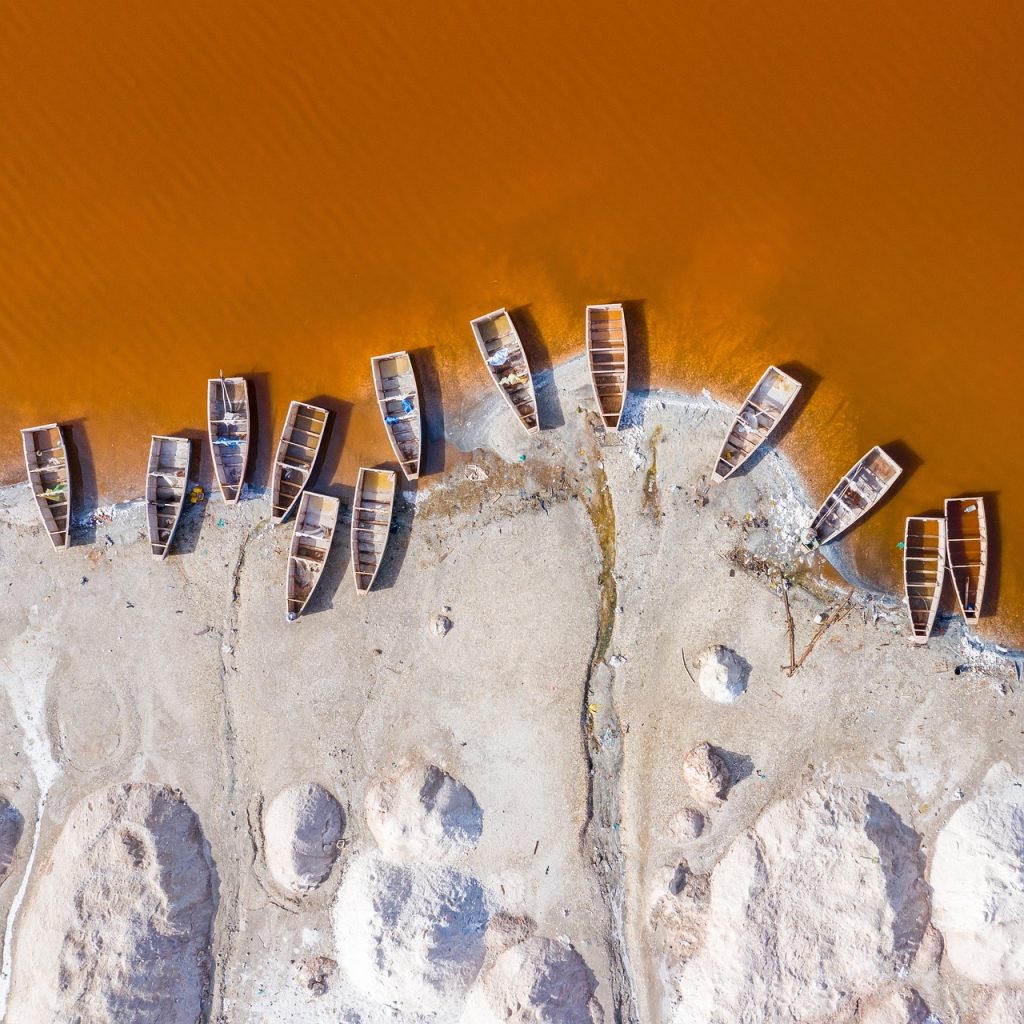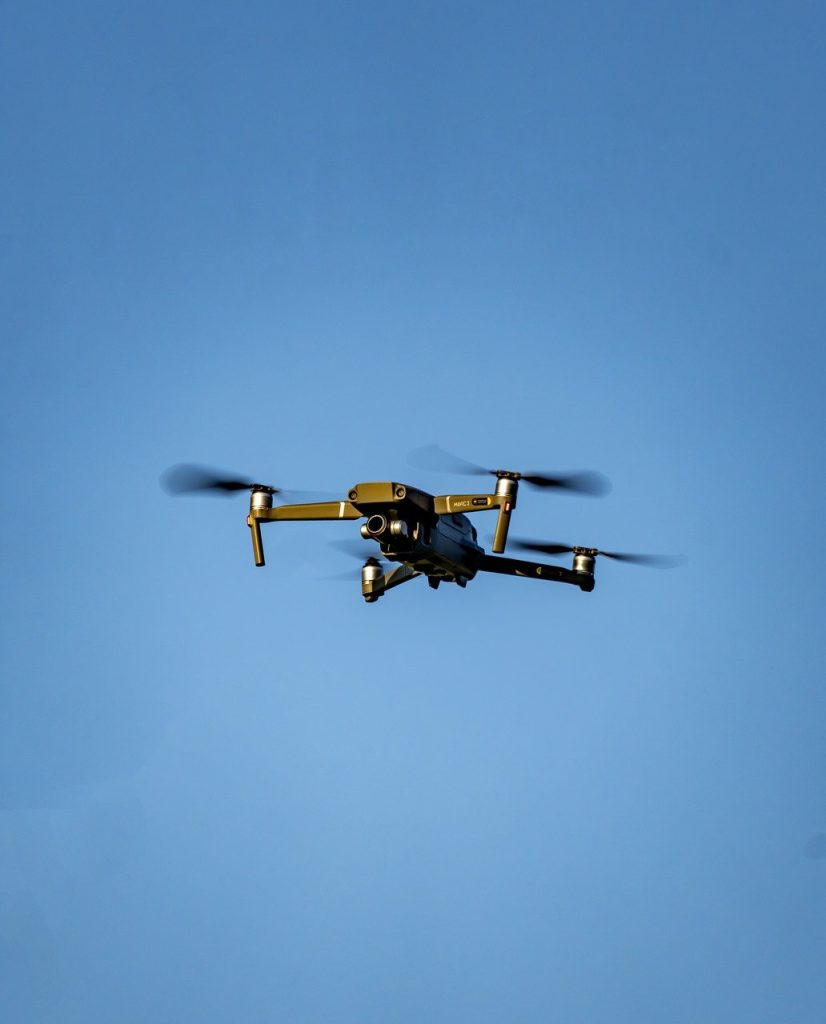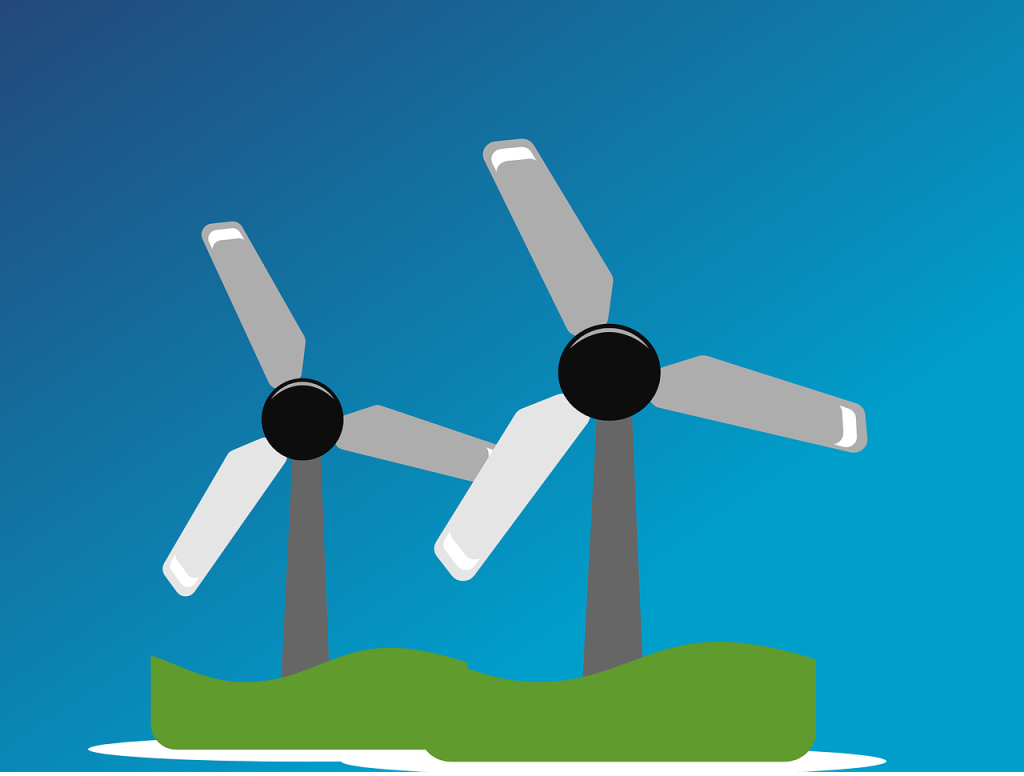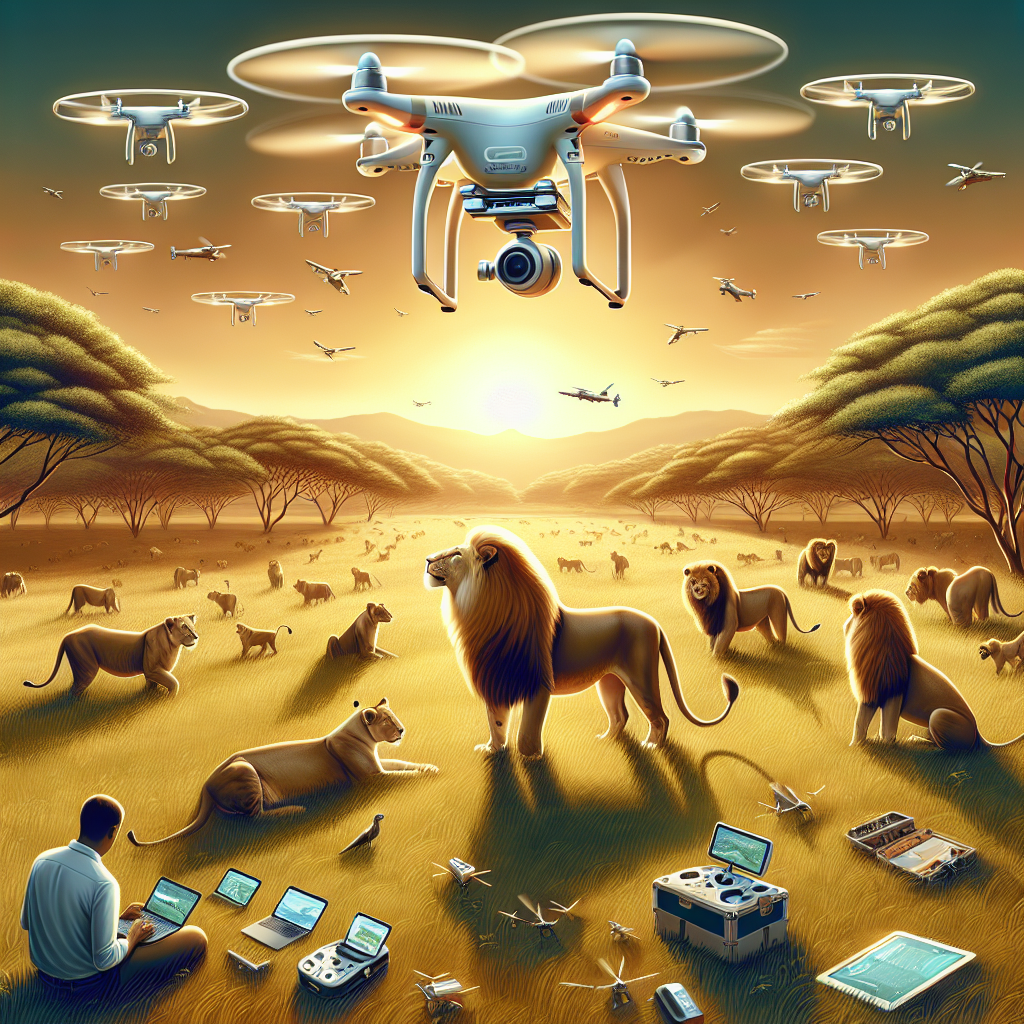So, picture this: majestic lions roaming the vast, untamed savannah, living harmoniously in their natural habitat. Sounds like a scene straight from a wildlife documentary, right? Well, what if I told you that drones are playing a crucial role in helping preserve these magnificent creatures? It may sound far-fetched, but it’s true. The use of drones in lion conservation has become a game-changer, as these aerial vehicles provide a unique perspective and invaluable data for researchers and conservationists alike. From monitoring lion populations to identifying potential threats, drones are proving to be an essential tool in the fight to protect these iconic animals.
Benefits of Using Drones in Lion Conservation
Aerial Surveillance
Drones have revolutionized the field of wildlife conservation, particularly in lion conservation efforts. Aerial surveillance through the use of drones provides conservationists and researchers with a bird’s eye view of lion populations and their habitats. This technology allows for systematic monitoring and assessment of lion populations, giving valuable insights into their numbers, behavior, and distribution.
Improved Tracking and Monitoring
One of the major advantages of using drones in lion conservation is the improved tracking and monitoring capabilities they offer. Through the use of GPS and tagging systems, drones can provide real-time location updates of individual lions, enabling researchers to track their movements and migration patterns more effectively. This data is crucial in understanding lion behavior, population dynamics, and potential threats they may face.
Data Collection and Analysis
Drones have greatly enhanced the data collection and analysis process in lion conservation. With their high-resolution imagery and geospatial mapping capabilities, drones can capture detailed information about lion habitats and their surrounding environments. This data, combined with advanced analytical techniques, allows researchers to estimate population densities, map out critical habitats, and conduct environmental monitoring to ensure the long-term survival of lion populations.
Efficient Anti-poaching Efforts
One of the most pressing threats to lion populations is poaching. Drones have proven to be highly effective tools in combating this illegal activity. By providing early detection of poaching activities, drones enable rapid response and intervention from conservation teams. Drones also enhance surveillance efforts in high-risk areas, acting as extra eyes in the sky to gather evidence for prosecution. This increased efficiency in anti-poaching efforts significantly contributes to the conservation of lions and helps deter illegal activities.
Reduced Human-Wildlife Conflict
Human-wildlife conflict is a significant challenge in many regions where lions coexist with local communities. Drones can play a vital role in reducing such conflicts by providing early warning systems to alert communities about the presence of lions near human settlements. Additionally, drones can help assess and mitigate the damage caused by lions to crops and livestock. By collecting data on lion movements and behavior, drones empower decision-makers with valuable insights for conflict resolution strategies that benefit both humans and lions.
Challenges and Limitations of Drone Usage
Battery Life and Flight Duration
One of the primary limitations of drone usage in lion conservation is the constraint posed by battery life and flight duration. Most drones currently available have relatively short battery lives, limiting the amount of time they can spend in the air for surveillance and monitoring purposes. This restriction necessitates careful planning and optimization of flight routes to gather essential data within the limited flight time available.
Adverse Weather Conditions
Another challenge faced by drone operators in lion conservation is adverse weather conditions. Drones are susceptible to strong winds, rain, and other environmental factors that can impact their flight stability and overall performance. Extreme weather conditions may even render drones completely grounded, hindering data collection and surveillance operations during critical periods.
Federal Aviation Regulations
The usage of drones is subject to various federal aviation regulations and restrictions imposed by different countries. These regulations can pose challenges for researchers and conservationists who seek to use drones in their lion conservation efforts. Compliance with these regulations may involve obtaining permits, licenses, or clearances, which may incur additional costs and bureaucratic procedures.
Interference with Wildlife Behavior
While drones provide valuable data for lion conservation, their presence can also interfere with wildlife behavior. Lions may be startled or feel threatened by the presence of drones, potentially altering their natural patterns of movement and behavior. Conservationists must strike a delicate balance between obtaining necessary data and minimizing disturbance to ensure the integrity of their findings and the well-being of the lion populations.
Drone Costs and Availability
The cost and availability of drones pose a significant challenge for lion conservation efforts. Drones can be quite expensive, especially when equipped with high-quality cameras, GPS systems, and other necessary equipment. This cost may limit the accessibility of drones, particularly for conservation organizations operating on limited budgets. Additionally, in some regions, access to drone technology and expertise may be scarce, further hindering widespread adoption and implementation of drone-based conservation strategies.

Case Studies on Drone Implementation
Kruger National Park, South Africa
Kruger National Park in South Africa has been at the forefront of using drones in lion conservation. Drones are utilized for monitoring lion populations, identifying potential threats such as poaching activities, and mapping lion habitats. The data collected through drone surveillance has helped park authorities develop targeted conservation strategies and improve anti-poaching efforts, ultimately contributing to the preservation of lions and their ecosystems.
Masai Mara National Reserve, Kenya
In the Masai Mara National Reserve, drones play a crucial role in tracking and monitoring lion populations. By using drones equipped with GPS and tagging systems, researchers can gather real-time location updates of individual lions, allowing them to understand their movements and behavior patterns better. This data assists in making informed decisions regarding conservation efforts and mitigating human-wildlife conflicts in the reserve.
Hwange National Park, Zimbabwe
Hwange National Park in Zimbabwe has also embraced drone technology to protect its lion populations. Drones are utilized for aerial surveillance, actively monitoring lion populations, and identifying potential threats. The high-resolution imagery captured by the drones aids in population density estimation, habitat mapping, and environmental monitoring. This valuable information guides conservation practitioners in implementing evidence-based strategies for lion conservation within the park.
Aerial Surveillance
Monitoring Lion Populations
Aerial surveillance using drones provides a highly effective method for monitoring lion populations. Drones equipped with high-resolution cameras can cover vast areas of lion habitats, capturing detailed imagery and videos of lions and their social structures. This aerial perspective allows researchers to estimate population sizes, track changes over time, and assess population health, contributing to effective conservation management.
Identifying Threats and Illegal Activities
Drones have proven instrumental in identifying threats to lion populations and detecting illegal activities. By patrolling vast areas from the sky, drones can quickly spot potential poaching activities, such as illegal hunting or the presence of traps. This information can be relayed to conservation teams on the ground for immediate intervention, significantly enhancing anti-poaching efforts and helping protect lions from harm.
Behavioral Observations
Aerial surveillance enables close behavioral observations of lions without disturbing their natural activities. Drones can document lion interactions, mating behaviors, hunting strategies, and territorial disputes, providing invaluable insights into their social dynamics and behavior patterns. This information helps researchers better understand lion ecology and develop targeted conservation strategies that address specific behavioral needs.
Habitat Mapping
Drones equipped with advanced imaging technologies can create detailed habitat maps of lion territories. The high-resolution imagery captured by drones allows for accurate mapping of the landscape, including vegetation cover, water sources, and potential prey availability. By identifying key habitat features, conservationists can prioritize the protection and restoration of vital lion habitats to ensure their long-term survival.

Improved Tracking and Monitoring
GPS and Tagging Systems
Tracking and monitoring individual lions can be challenging due to their vast home ranges and elusive nature. Drones equipped with GPS and tagging systems provide a solution to this challenge. By attaching GPS tags to individual lions, researchers can track their movements and behavior in real-time. Drones can then collect and transmit this data, allowing for comprehensive tracking and monitoring of lion population dynamics.
Real-time Location Updates
With the aid of drones, real-time location updates of tagged lions can be obtained more efficiently. Drones equipped with GPS receivers can communicate with the tags and relay location data to researchers on the ground in real-time. This enables researchers to respond promptly to emerging conservation issues, such as incidences of human-wildlife conflict or the encroachment of lion territories by human activities.
Identification of Individual Lions
Drones equipped with high-resolution cameras and advanced imaging technologies can aid in the identification of individual lions. By capturing clear images of unique features, such as facial markings or specific scars, researchers can distinguish between different individuals within a population. This identification process is crucial for population monitoring, understanding social structures, and estimating population sizes.
Migration and Movement Patterns
Drones have greatly enhanced the study of lion migration and movement patterns. By monitoring tagged lions from the air, researchers can trace their movements across different habitats, assess seasonal variations, and identify potential barriers or corridors for migration. Understanding these migration patterns is essential for designing effective conservation strategies and ensuring the connectivity of lion habitats.
Data Collection and Analysis
High-Resolution Imagery
Drones equipped with high-resolution cameras capture imagery that provides valuable data for lion conservation. The high-quality images allow researchers to identify individual lions, assess their health condition, and estimate age and reproductive status. This information aids in population dynamics research, assessing the success of conservation efforts, and identifying potential threats or challenges to lion populations.
Geospatial Mapping
Geospatial mapping using drone data enables researchers to create detailed maps of lion habitats and their surrounding environments. Combining aerial imagery with geographical information systems (GIS) allows for accurate mapping of vegetation cover, water sources, and other critical features that influence lion distribution and prey availability. Geospatial mapping also helps identify areas that require targeted conservation interventions or habitat restoration efforts.
Population Density Estimation
Accurate estimation of lion population densities is crucial for effective conservation planning. Drones, with their high-resolution capabilities, can capture data that aids in population density estimation. By analyzing aerial imagery and combining it with demographic data, researchers can estimate lion densities, track changes over time, and identify areas with low or high population pressures. This information guides conservation strategies and ensures resource allocation based on the specific needs of different lion populations.
Environmental Monitoring
Drones provide an efficient and cost-effective means of monitoring environmental changes that impact lion habitats. Using aerial surveillance, researchers can detect and monitor factors such as deforestation, encroachment of human settlements, or changes in water availability. This data helps conservation practitioners identify potential threats to lion populations and develop strategies to mitigate such environmental changes, ultimately ensuring the long-term survival of lions and their ecosystems.

Efficient Anti-poaching Efforts
Early Detection of Poaching Activities
Drones have proven to be invaluable tools in the early detection of poaching activities. Through aerial surveillance, drones can patrol vast areas and detect signs of illegal hunting, trapping, or the presence of poaching camps. By relaying this information to conservation teams in real-time, drones facilitate rapid response and intervention, increasing the likelihood of apprehending poachers before they can harm the lion population.
Rapid Response and Intervention
Due to their agility and ability to cover large areas quickly, drones enable rapid response and intervention in anti-poaching efforts. Conservation teams can be alerted to potential threats or emerging poaching activities, allowing them to mobilize swiftly and implement measures to counteract illegal activities. This immediate response significantly enhances the effectiveness of anti-poaching efforts, safeguarding lion populations from harm.
Enhanced Surveillance in High-risk Areas
Certain areas are more prone to poaching than others due to their proximity to human settlements or lack of effective law enforcement. Drones can provide enhanced surveillance in these high-risk areas, acting as extra eyes in the sky to deter poachers and gather evidence for law enforcement purposes. By maintaining a constant presence in these vulnerable areas, drones contribute to a higher level of security for lion populations.
Evidence Gathering for Prosecution
In addition to deterring poaching activities, drones play a crucial role in gathering evidence for prosecution. The high-resolution imagery and videos captured by drones can provide valuable evidence in court, helping secure convictions against poachers and illegal wildlife traders. This not only serves as a deterrent for potential offenders but also strengthens the legal framework for lion conservation by holding perpetrators accountable for their actions.
Reduced Human-Wildlife Conflict
Crop and Livestock Protection
Human-wildlife conflict often arises when lions encroach upon agricultural lands or prey on livestock. Drones can be used to protect crops and livestock by providing early warning systems. By monitoring lion movements and behavior, drones can alert local communities to the presence of lions in their vicinity, allowing them to take preventative measures such as reinforcing fences or herding livestock into safer enclosures. This proactive approach helps minimize conflict and reduces the risk of lion retaliatory killings.
Safety in Lion Territories
Drones can assist in promoting safety in lion territories by monitoring human activities and assessing potential risks. By monitoring areas of high human density or the presence of individuals engaged in risky behavior, such as illegal hunting or encroachment, drones can alert authorities and facilitate swift intervention. This proactive approach helps ensure the safety of both humans and lions, minimizing unnecessary conflicts and promoting coexistence.
Alerting Local Communities
Drones can act as effective tools for alerting local communities about the presence of lions in their proximity. By transmitting real-time data to community members, drones provide crucial information for making informed decisions regarding activities in lion territories. This communication can help communities adjust their daily routines, avoid areas where lions are currently present, and foster a better understanding of lion conservation goals and challenges.
Improved Decision-making for Conflict Resolution
The data collected through drone surveillance and monitoring provides valuable information for making informed decisions regarding conflict resolution strategies. By analyzing lion movement patterns, behavior data, and human activities, conservation practitioners can identify potential conflict hotspots and design targeted interventions to mitigate conflicts. This data-driven approach ensures that resources are allocated efficiently, leading to effective and sustainable conflict resolution between humans and lions.

Battery Life and Flight Duration
Current Limitations
Battery life and flight duration remain significant limitations for drone usage in lion conservation. Most drones have a limited flight time due to the constraints of current battery technology. This means that operators must plan flights carefully to optimize data collection within the available flight time. Longer flight durations would allow for more comprehensive surveillance and monitoring, requiring fewer battery changes and increasing overall efficiency.
Technological Advances
Researchers and drone manufacturers are continually working on advancing battery technology to improve flight duration. Lithium-ion batteries with higher energy densities are being developed, allowing drones to stay airborne for longer periods. Technological advances in battery technology are critical for extending flight durations and enabling more comprehensive data collection, which will enhance lion conservation efforts.
Battery Swapping and Charging Stations
One solution to the limited flight duration is the implementation of battery swapping and charging stations. Instead of waiting for a drone to recharge, operators can swap out depleted batteries for fully charged ones, allowing for uninterrupted surveillance and monitoring. Establishing strategically located charging stations in remote areas would enable drone operators to cover larger territories and conduct longer surveys without being limited by battery life.
Efficiency Improvements
Optimizing drone flight patterns and data collection techniques can help improve efficiency and maximize flight duration. Planning efficient flight paths, reducing unnecessary maneuvers, and minimizing idle time significantly contributes to extending the time drones can remain airborne. Furthermore, advancements in drone technology, such as increased payload capacities and streamlined designs, can help reduce energy consumption and increase overall flight efficiency.
Drone Costs and Availability
Affordability and Budget Constraints
The cost of drones remains a significant barrier to their widespread adoption in lion conservation efforts. High-quality drones equipped with advanced imaging and tracking systems can be quite expensive, making them inaccessible for many conservation organizations operating on limited budgets. The initial investment, as well as ongoing maintenance and training costs, can pose challenges for organizations seeking to integrate drones into their conservation strategies.
Access to Drone Technology
In some regions, access to drone technology and expertise may be limited. Geographical remoteness, lack of infrastructure, and limited technological resources can hinder the availability and utilization of drones in lion conservation efforts. Collaborative efforts between technology providers, conservation organizations, and local communities are essential for overcoming these barriers and making drone technology more accessible for lion conservation initiatives.
Adoption Challenges in Developing Countries
Developing countries, where lion populations are often concentrated, may face additional challenges in adopting drone technology. Limited resources, inadequate infrastructure, and a lack of trained personnel can impede the deployment and effective use of drones in these regions. Supporting capacity-building initiatives, providing training opportunities, and facilitating access to affordable drone technology are crucial steps in overcoming these challenges and promoting the integration of drones in lion conservation efforts.
Collaboration and Funding Opportunities
Collaboration between governmental organizations, non-profit conservation groups, and private sector entities can contribute to overcoming the challenges of drone costs and availability. Public-private partnerships can provide funding opportunities for conservation organizations to invest in drone technology and related infrastructure. By pooling resources and expertise, such collaborations can enable the development of affordable and accessible drone solutions tailored for lion conservation in both developed and developing regions.
In conclusion, the benefits of using drones in lion conservation are numerous and varied. From aerial surveillance and improved tracking capabilities to efficient anti-poaching efforts and reduced human-wildlife conflict, drones have emerged as valuable tools in safeguarding lion populations. While challenges such as battery life, adverse weather conditions, and regulatory frameworks exist, ongoing technological advancements, collaborations, and capacity-building efforts provide opportunities for overcoming these obstacles. By harnessing the potential of drone technology, we can enhance lion conservation efforts, promote coexistence between humans and lions, and ensure the long-term survival of these majestic creatures.


